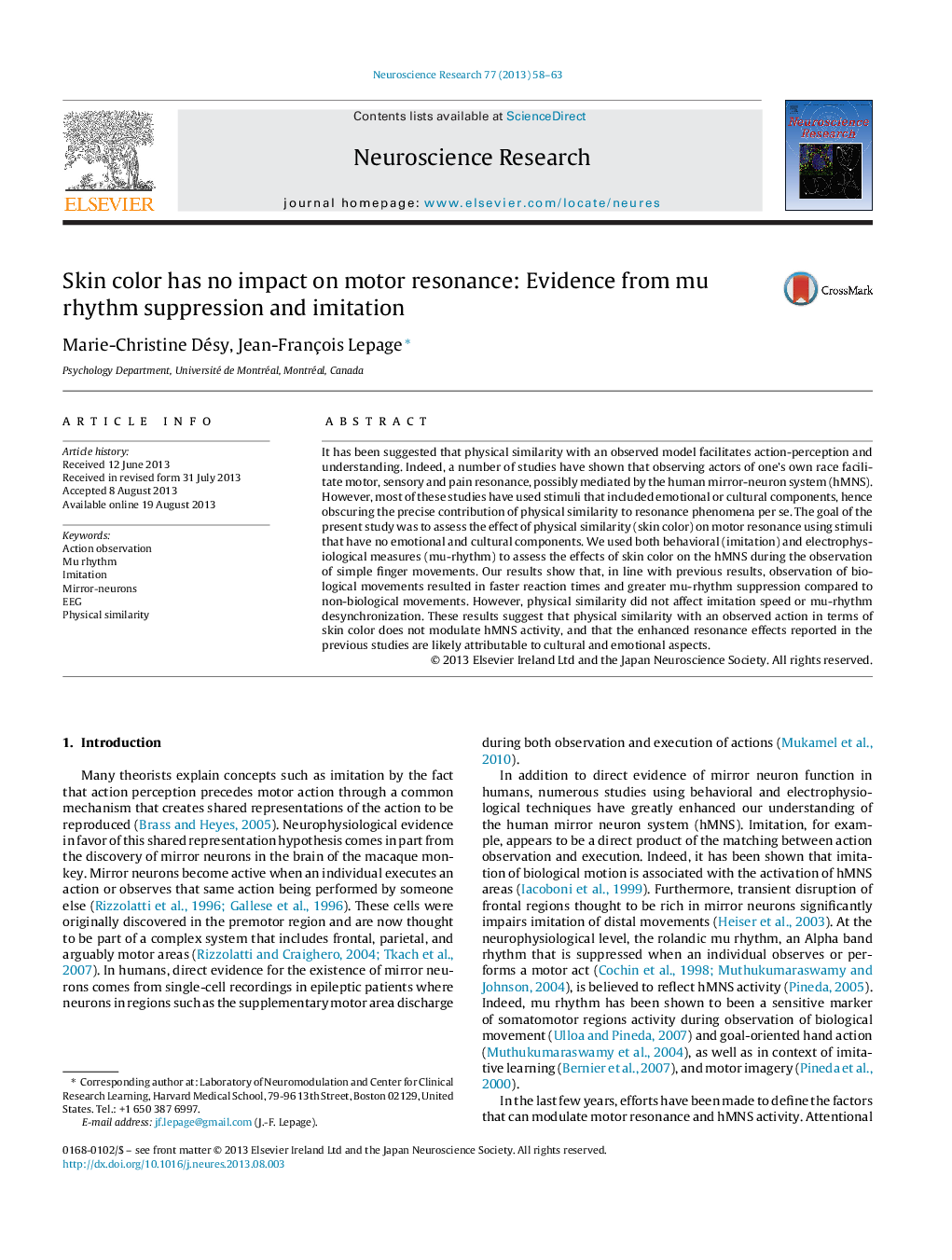| Article ID | Journal | Published Year | Pages | File Type |
|---|---|---|---|---|
| 6286404 | Neuroscience Research | 2013 | 6 Pages |
Abstract
It has been suggested that physical similarity with an observed model facilitates action-perception and understanding. Indeed, a number of studies have shown that observing actors of one's own race facilitate motor, sensory and pain resonance, possibly mediated by the human mirror-neuron system (hMNS). However, most of these studies have used stimuli that included emotional or cultural components, hence obscuring the precise contribution of physical similarity to resonance phenomena per se. The goal of the present study was to assess the effect of physical similarity (skin color) on motor resonance using stimuli that have no emotional and cultural components. We used both behavioral (imitation) and electrophysiological measures (mu-rhythm) to assess the effects of skin color on the hMNS during the observation of simple finger movements. Our results show that, in line with previous results, observation of biological movements resulted in faster reaction times and greater mu-rhythm suppression compared to non-biological movements. However, physical similarity did not affect imitation speed or mu-rhythm desynchronization. These results suggest that physical similarity with an observed action in terms of skin color does not modulate hMNS activity, and that the enhanced resonance effects reported in the previous studies are likely attributable to cultural and emotional aspects.
Related Topics
Life Sciences
Neuroscience
Neuroscience (General)
Authors
Marie-Christine Désy, Jean-François Lepage,
